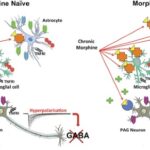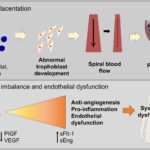Severe persistent asthma is the most critical classification within the asthma spectrum, marked by chronic, unrelenting symptoms that are poorly controlled despite high-dose medications. These patients often experience daily symptoms, frequent nighttime awakenings, and significant limitations in daily activities. Lung function tests typically reveal forced expiratory volume in one second (FEV₁) below 60% of predicted values.

Clinical Features and Diagnostic Criteria
Characteristic Symptoms
- Daily wheezing and shortness of breath
- Frequent nocturnal awakenings (often nightly)
- Use of rescue inhaler multiple times per day
- Marked activity limitation
- Persistent cough and chest tightness
Objective Findings
- FEV₁ < 60% predicted
- Peak expiratory flow (PEF) variability >30%
- Exacerbations requiring oral corticosteroids ≥2 times per year
Pathophysiology of Severe Asthma
Severe persistent asthma is driven by chronic airway inflammation involving multiple immune cells, including eosinophils, mast cells, and T-helper 2 (Th2) lymphocytes. These responses result in:
- Bronchial hyperresponsiveness
- Structural airway remodeling
- Mucus overproduction
- Smooth muscle hypertrophy
Asthma Severity Classification Chart
| Asthma Classification | Symptoms Frequency | Nighttime Awakenings | FEV₁ (%) | Activity Limitation |
|---|---|---|---|---|
| Intermittent | ≤2 days/week | ≤2/month | ≥80% | None |
| Mild Persistent | >2 days/week | 3–4/month | ≥80% | Minor |
| Moderate Persistent | Daily | >1/week | 60–80% | Some |
| Severe Persistent | Throughout the day | Nightly | <60% | Extreme |
Common Triggers of Severe Asthma Exacerbations
Understanding and minimizing exposure to triggers is crucial:
- Environmental allergens: pollen, dust mites, mold
- Air pollutants: smoke, ozone, vehicle exhaust
- Viral infections: especially rhinovirus and RSV
- Medication sensitivities: NSAIDs, beta-blockers
- Occupational exposures: chemicals, fumes
- Weather changes: cold, dry air or humidity
Treatment Strategies for Severe Persistent Asthma
Stepwise Pharmacologic Approach
Management aligns with GINA (Global Initiative for Asthma) guidelines and typically includes:
- High-dose inhaled corticosteroids (ICS)
- Long-acting beta₂-agonists (LABAs)
- Add-on therapies: LTRAs, tiotropium, or biologics
- Short-acting beta agonists (SABA) for rescue
- Oral corticosteroids in refractory cases
Biologic Therapies for Severe Asthma
Biologics target specific immune pathways and are used when symptoms remain uncontrolled despite maximum inhaler therapy.
| Biologic Agent | Target | Indication |
|---|---|---|
| Omalizumab | IgE | Allergic asthma |
| Mepolizumab | IL-5 | Eosinophilic asthma |
| Benralizumab | IL-5 receptor α | Eosinophilic asthma |
| Dupilumab | IL-4Rα | Type 2 inflammation, nasal polyps |
| Tezepelumab | TSLP (alarmin cytokine) | Broad severe asthma types |
Personalized Management and Monitoring
Asthma Action Plans
All patients should have a personalized asthma action plan with:
- Baseline peak flow readings
- Zones indicating severity (green/yellow/red)
- Stepwise medication adjustments
- Emergency contact protocols
Pulmonary Function Monitoring
- Spirometry every 3–6 months
- Peak flow diaries for daily variability
- Fractional exhaled nitric oxide (FeNO) to assess airway inflammation
Comorbid Conditions That Exacerbate Asthma
- Allergic rhinitis and sinusitis
- Obesity
- Gastroesophageal reflux disease (GERD)
- Obstructive sleep apnea (OSA)
- Depression and anxiety
These must be concurrently managed to optimize asthma control.
Lifestyle Modifications to Improve Asthma Outcomes
- Smoking cessation: Critical for medication efficacy
- Weight management: Reduces inflammation and improves lung function
- Physical activity: Tailored exercise plans under supervision
- Vaccinations: Influenza and pneumococcal vaccines reduce exacerbation risks
Pediatric Considerations in Severe Persistent Asthma
Children present unique challenges:
- Variable symptom patterns
- Poor medication adherence
- Need for age-appropriate devices (e.g., spacers)
- Monitoring growth due to corticosteroid use
Early diagnosis and a multidisciplinary approach are essential in pediatric populations.
When to Refer to a Specialist
Referral to a pulmonologist or allergist is recommended when:
- Symptoms remain uncontrolled on step 4/5 therapy
- Frequent emergency visits or hospitalizations occur
- Diagnostic uncertainty exists (e.g., vocal cord dysfunction)
- Eligibility for biologic therapy needs assessment
Future Directions in Severe Asthma Care
- Precision medicine: Biomarker-guided treatment selection
- Gene therapy: Potential for disease modification
- Digital health tools: Smart inhalers and remote monitoring
- Novel therapeutics: Small molecules targeting alarmins and cytokines
Severe persistent asthma demands a multifactorial treatment strategy involving high-dose pharmacologic therapy, targeted biologics, trigger avoidance, and comorbidity management. Precision diagnostics and emerging biologics offer new hope for patients whose lives are disrupted by uncontrolled asthma. A structured, individualized approach supported by specialist care ensures optimal long-term outcomes.

